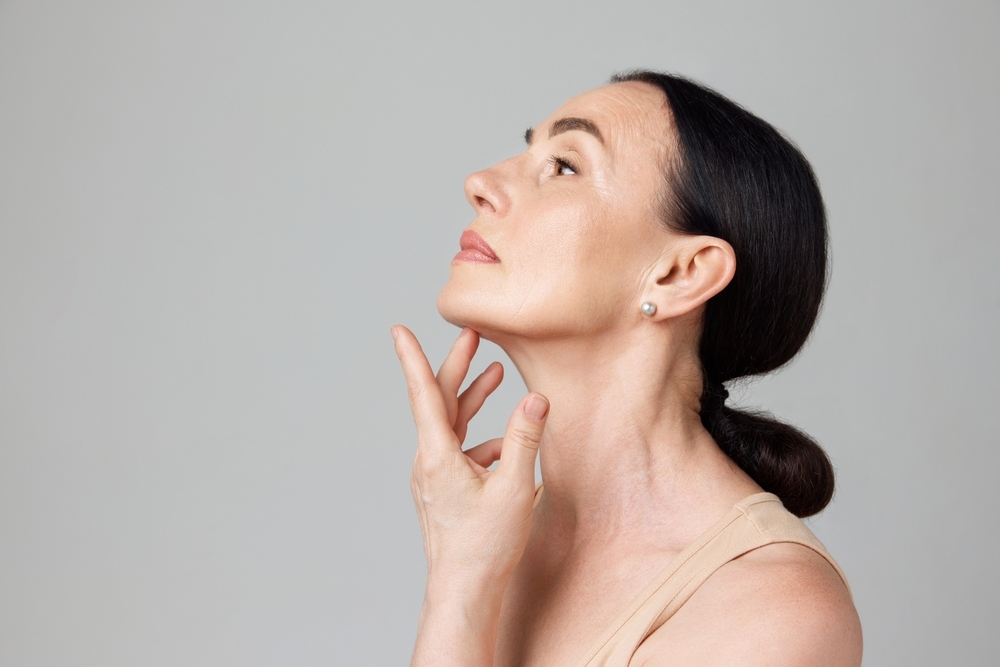Sunlight provides warmth, helps your body produce Vitamin D, and even touts mental health benefits. But sun exposure can also lead to skin damage, including sun aging.
So, how does the sun age your skin, and how is it different from normal skin aging? The difference lies in ultraviolet (UV) radiation, visible light, and infrared light—all of which can lead to photoaging. Your skin is exposed to these light forms daily, so how can you determine if the changes you're seeing are caused by sun damage or nature?
Here's how to spot the differences and what you can do to protect your skin.
Photoaging vs. Normal Aging
What Does Natural Skin Aging Look Like?
Normal aging refers to developing fine lines, losing skin elasticity and thickness, and coping with dry skin. From the day you're born, your body is in a state of destruction and repair. As you get older, your skin cells' ability to repair damage from the passage of time and external and internal injury decreases. As a result, your skin becomes less plump and smooth and more well worn and established.
How Does the Sun Age Your Skin?
So, how does photoaging differ from normal aging? Photoaging is the greatest contributing factor to facial aging, and it's one of the most common skin conditions in the US. Photoaging results from exposure to various light sources, including UV, visible, and infrared light.
When it comes to the sun, UVA and UVB rays both damage your DNA and cause photoaging. However, UVA light is more closely linked to skin aging, and this damage builds up over time. Driving to pick up a coffee, walking your dog on a summer day, or sitting by a window enjoying a meal all expose you to UV rays. And the damage to your delicate facial skin doesn't end with sun exposure.
Visible light in the form of blue light from smartphones, tablets, televisions, and computers increases DNA damage and photoaging. All of these types of light lead to inflammation, decreased collagen production, loss of elastic fibers, and extracellular matrix skin structure breakdown.
Visible Effects of Sun Exposure
Over time, sun and visible light exposure can lead to:
- Hyperpigmentation or discoloration
- Broken blood vessels
- Sunspots
- Wrinkles
- Skin atrophy or thickening
- Loss of skin elasticity
- Precancerous skin lesions
How to Prevent Photoaging
Protection from sun aging starts with using a broad-spectrum sunscreen that protects against UVB and UVA rays daily. To give your skin added defense against photoaging from visible light, use a tinted mineral or hybrid sunscreen like EltaMD UV Clear Tinted Broad-Spectrum SPF 46. This can be especially helpful if you have a darker skin tone since visible light exposure worsens melasma and hyperpigmentation in melanated skin.
Sunscreen Ingredients to Look For
Look for these ingredients in your sunscreen to help minimize photoaging.
Zinc Oxide
This common mineral sunscreen ingredient shields your skin from UV rays as soon as you apply it, physically blocking the sun's rays from penetrating your skin.
Iron Oxides
Iron Oxides are pigments that give tinted sunscreen formulas their color. These compounds protect your skin from blue light exposure and resulting pigmentation, especially when combined with Zinc Oxide. They also provide lightweight coverage to even skin tone.
Niacinamide
Niacinamide reduces the effects of DNA damage from UV rays while boosting collagen production.
Antioxidants
Antioxidants like Vitamin E and Vitamin C fight free radicals, which cause inflammation, uneven skin tone, and sagging skin.
Sunscreen Best Practices
The American Academy of Dermatology recommends applying a broad-spectrum sunscreen with SPF 30 or higher daily and reapplying at least every two hours. Using a lightweight daily facial sunscreen like EltaMD UV Daily Broad-Spectrum SPF 40 makes it easy. This formula protects from UVA and UVB rays with Zinc Oxide. It also helps repair photoaged skin with Vitamin E and Hyaluronic Acid for healthy, hydrated skin.
Enjoy the Sun, Protect Your Skin
In addition to wearing broad-spectrum sunscreen daily, you can slow down photoaging by seeking shade, wearing sun protective or ultraviolet protection factor (UPF) clothing, and visiting a Dermatologist. If you're concerned about existing sun damage, your Derm can help you build a treatment regimen, including prescriptions like topical Retinoids and cosmetic treatments like lasers, microneedling, and professional peels.
Go ahead, enjoy the sun. All it takes is a little care and attention to put your best face forward.

